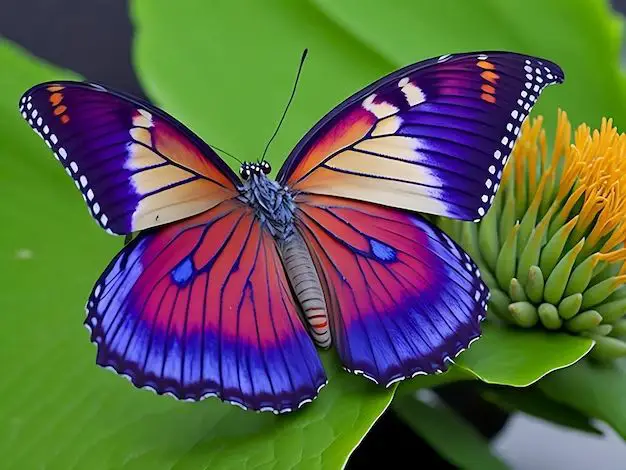If only it were true..
From Jay Harman (the real Crocodile Dundee) :
The brilliant colors on the wings of many butterflies and some bird feathers, such as peacocks, are not, in fact, due to any actual pigment in the wing material itself. Instead, color is created through the prismlike, crystalline structure of the surface. The light is split into its various bands of color and reflected to the eye of the observer, in much the same way as the perception of a rainbow.
This effect has been copied by biomimics to produce nonfading, pigment-free paints and electronic display screens. Qualcomm has copied the butterfly effect in its mirasol and IMOD displays. The same layered structures that give a butterfly’s wings such vibrancy are used to create an always-on effect without draining energy for backlighting. Because these screens rely on ambient light rather than illumination, colors intensify outdoors, unlike traditional screens that are washed out by daylight. Since the screens don’t generate light, they also use about 90 percent less power to operate.
Mirasol e-paper technology was conceptualized by electrical engineer Mark Miles, inspired by Blue Morpho butterflies, which reflect light using nanoscale structures on their wings that cause incoming light waves to interfere with one another, reflecting only specific wavelengths, resulting in the appearance of an iridescent, brilliant color. Qualcomm bought his company in 2004 for $170 million and refined the technology over the years.
IMOD technology maintains full visibility in direct sunlight, unlike LCDs and OLED. But rather than moving around dye like an E-Ink screen, IMOD uses tiny moving mirror-like elements, referred to as being a micro-electro-mechanical system, or MEMS (also known as a “micro-machine”). The downside to IMOD has historically been that it reproduces flat, unsaturated colors, a problem that proved impossible to fix before the tech was abandoned.
In order to start commercializing Mirasol, Qualcomm spent almost one billion dollars on a dedicated factory in Taiwan to produce the screens.
I heard from a former engineer that used to work there that when the production line in Taiwan started to churn out displays, there was a 50% failure-rate and the screens were utterly ruined.



No comments:
Post a Comment